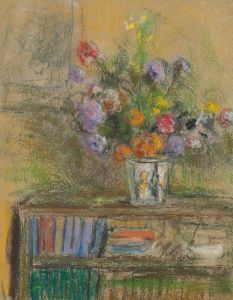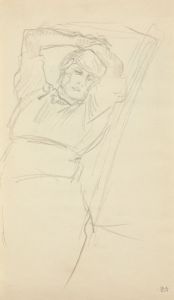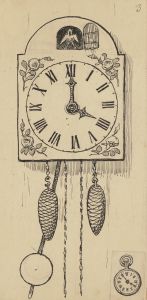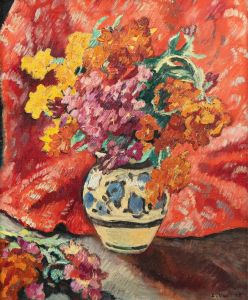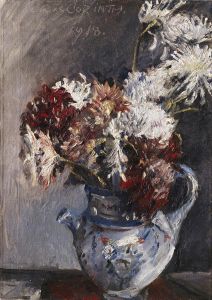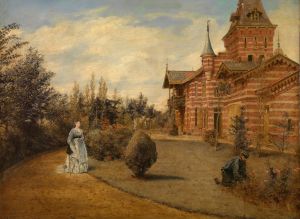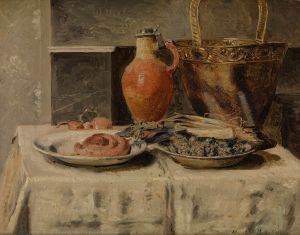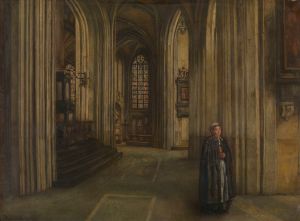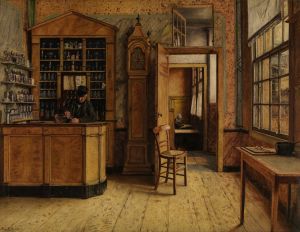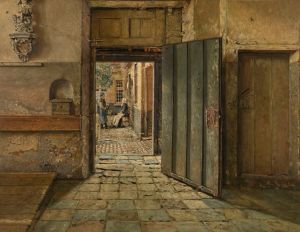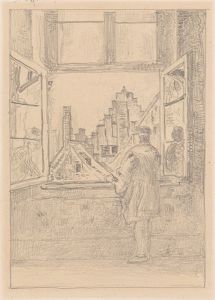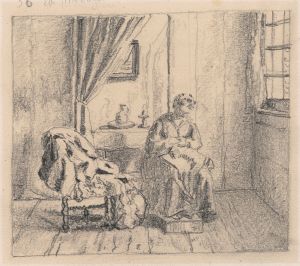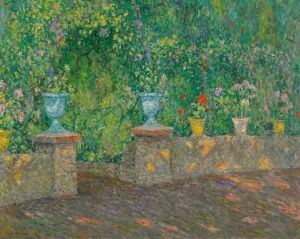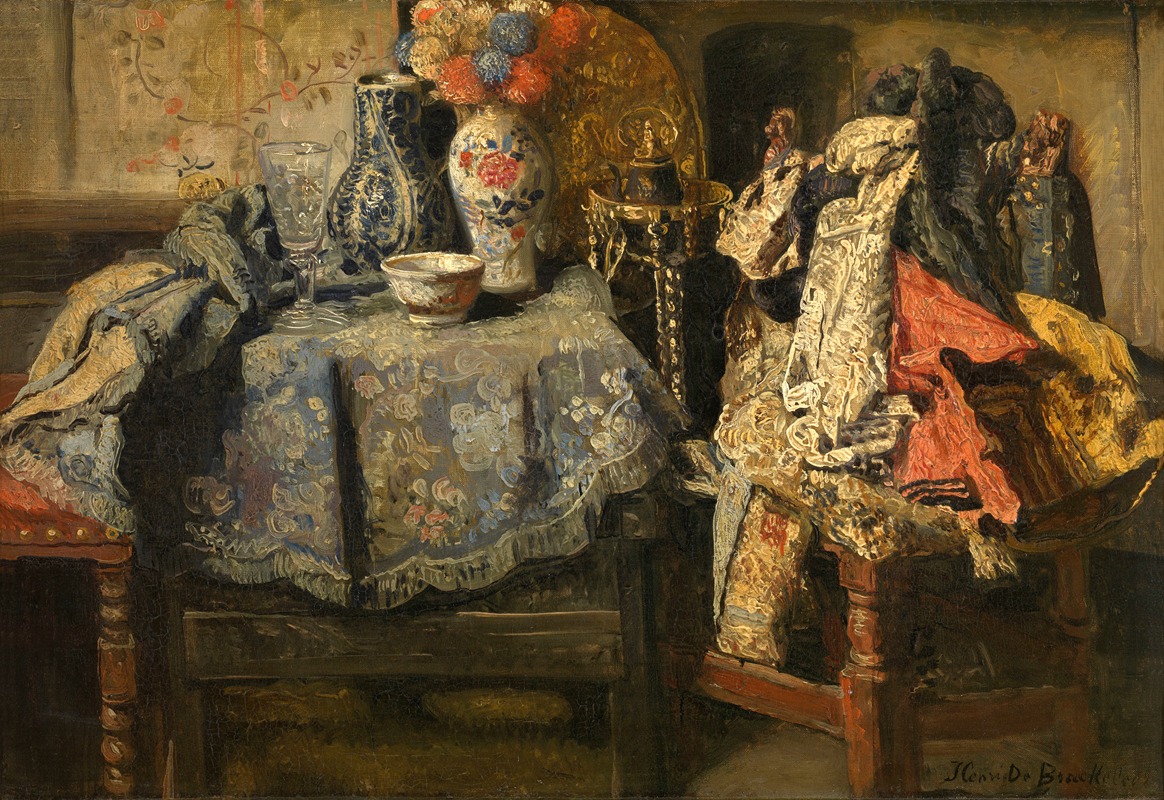
Still Life Requisites
A hand-painted replica of Henri de Braekeleer’s masterpiece Still Life Requisites, meticulously crafted by professional artists to capture the true essence of the original. Each piece is created with museum-quality canvas and rare mineral pigments, carefully painted by experienced artists with delicate brushstrokes and rich, layered colors to perfectly recreate the texture of the original artwork. Unlike machine-printed reproductions, this hand-painted version brings the painting to life, infused with the artist’s emotions and skill in every stroke. Whether for personal collection or home decoration, it instantly elevates the artistic atmosphere of any space.
Henri de Braekeleer (1840–1888) was a Belgian painter known for his detailed and atmospheric depictions of interiors and still lifes. His work often reflects a meticulous attention to light, texture, and the quiet, contemplative mood of everyday scenes. Among his notable works is Still Life Requisites, a painting that exemplifies his skill in capturing the subtleties of light and shadow, as well as his focus on the materiality of objects.
Still Life Requisites is a still life painting that showcases de Braekeleer’s ability to render ordinary objects with extraordinary precision. The composition typically includes items such as pottery, glassware, or other domestic objects, arranged in a way that emphasizes their textures and forms. The painting is marked by a subdued color palette, a characteristic feature of de Braekeleer’s style, which often leans toward earthy tones and muted shades. This restrained use of color enhances the realism of the objects while creating a harmonious and introspective atmosphere.
De Braekeleer was heavily influenced by the Dutch Golden Age painters, particularly Johannes Vermeer and Pieter de Hooch, whose works also focused on interiors and the interplay of light. Like these artists, de Braekeleer paid close attention to the way light falls on surfaces, creating a sense of depth and realism. In Still Life Requisites, this mastery of light is evident in the way the objects are illuminated, with subtle gradations of light and shadow that give the painting a three-dimensional quality.
The painting reflects de Braekeleer’s broader artistic concerns, including his interest in the quiet beauty of everyday life and his ability to find poetry in the mundane. His works often evoke a sense of stillness and introspection, inviting viewers to pause and reflect on the simple yet profound aspects of existence. This focus on the ordinary aligns with the broader 19th-century artistic movement of Realism, which sought to depict life as it was, without idealization.
Henri de Braekeleer’s career was relatively short, as he struggled with mental health issues that affected his ability to work in his later years. Despite this, his contributions to Belgian art were significant, and his works continue to be appreciated for their technical skill and emotional depth. Still Life Requisites stands as a testament to his talent and his unique ability to elevate everyday objects into works of art.
Further details about the specific provenance or current location of Still Life Requisites are not readily available, but the painting remains an important example of de Braekeleer’s oeuvre and his mastery of the still life genre.





